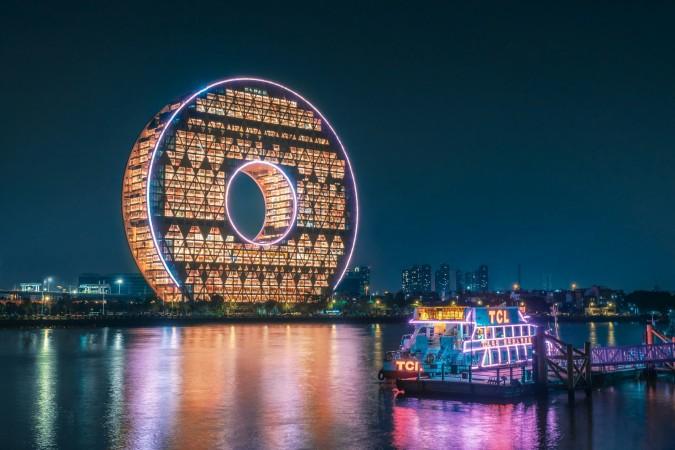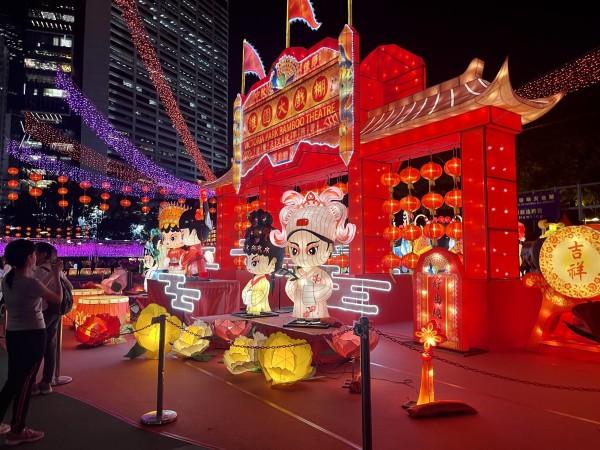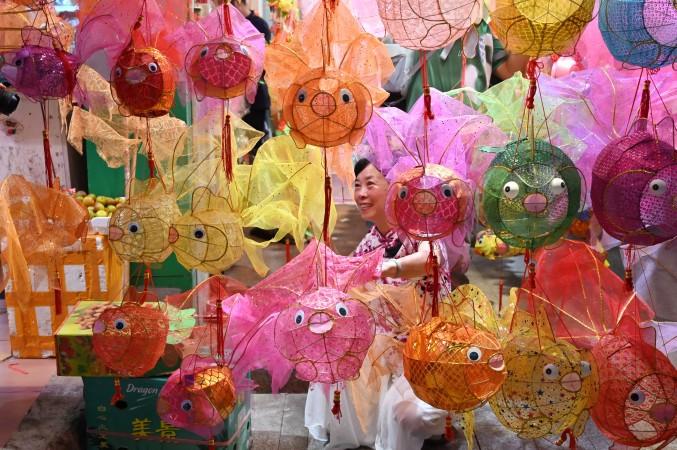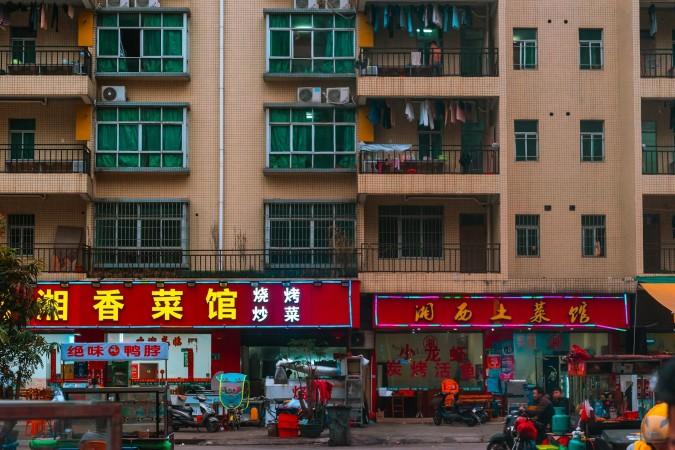Explore Guangzhou - China Travel, Asia
Greetings from Guangzhou, an exciting city in southern China. Known for its rich history and dynamic culture, Guangzhou is a must-visit destination for travelers seeking an authentic Chinese experience. This city is not only a major economic powerhouse but also a treasure trove of historical sites, culinary delights, and cultural festivities. Whether you’re exploring ancient temples, savoring Cantonese cuisine, or shopping in bustling markets, Guangzhou promises an unforgettable adventure.
Population: Approximately 18.6 million in 2020.
Economy: Manufacturing center of the Pearl River Delta and second largest economy in South-Central China.
Landmarks: Famous for Chen Clan Ancestral Hall, Baiyun Mountain, and Canton Tower.
China

Overview of Guangzhou
History & Cultural Influence
Guangzhou, formerly known as Canton, has a history that extends back over 2,200 years. It was an important port on the old Maritime Silk Road, which connected China to the rest of the globe. Over the centuries, Guangzhou has evolved into a melting pot of cultures, influenced by different dynasties and colonial periods. Today, its historical legacy is evident in its architecture, traditions, and festivals. As the heartland of Cantonese culture, the city's culture is rich and diverse, renowned for its language, music, and culinary traditions. Each corner of Guangzhou tells a story, reflecting its unique blend of ancient heritage and modern vibrancy.
Interaction with The Locals
Guangzhou, the capital of Guangdong Province in southern China, is one of the country's largest cities, with a population exceeding 18 million people. The city's residents, known as Cantonese, are known for their entrepreneurial spirit and rich cultural traditions. Guangzhou's population is diverse, with a mix of locals and a significant number of migrants from other parts of China and around the world, contributing to its vibrant and cosmopolitan atmosphere.

Liede Bridge in Guangzhou - © Lycheeart
Top Attractions in Guangzhou
Guangzhou is a city rich in history and culture, with a variety of attractions that showcase its unique blend of tradition and modernity. Explore these must-see sites in this energetic city for a memorable travel experience.
Canton Tower
Canton Tower, officially known as the Guangzhou TV & Sightseeing Tower, is one of the world's highest skyscrapers, reaching up to 600 meters. Visitors can enjoy breathtaking 360-degree views of the city from its observation decks. The tower also features a thrilling skywalk and bubble tram, offering a unique aerial experience. At night, the tower is lit with a magnificent light show, creating a breathtaking spectacle.
Chen Clan Ancestral Hall
This historical building, also known as the Chen Clan Academy, serves as a cultural museum showcasing traditional Lingnan architecture and craftsmanship. The hall is renowned for its intricate wood carvings, stone sculptures, and beautiful ceramic artworks that was originally built by the Chen family for ancestral worship and later turned into a folk art museum.
Baiyun Mountain
Also known as "White Cloud Mountain," Baiyun Mountain is a popular natural attraction offering stunning views and outdoor activities. The mountain area includes scenic spots like Moxing Ridge and the Nengren Temple. It's an excellent location for hiking, birdwatching, and appreciating nature. The mountain is called because of the white clouds that frequently cover its peaks.
Yuexiu Park
Yuexiu Park is the largest park in downtown Guangzhou, known for its beautiful landscapes and historical monuments. The park is home to the iconic Five Rams Statue, which symbolizes the city of Guangzhou. Other attractions include the ancient city wall, Zhenhai Tower (also known as the Five-Story Pagoda), and several picturesque lakes and gardens.
Chimelong Safari Park
Chimelong Safari Park, one of Asia's largest and most popular, is located in Guangzhou's Panyu District. The park is home to a wide variety of wildlife, including rare and endangered species such as pandas, white tigers, and koalas. It offers various attractions like animal shows, safaris, and interactive exhibits.
Temple of the Six Banyan Trees
Also known as Liurong Temple, this ancient Buddhist temple is famous for its six banyan trees and the Flower Pagoda. The temple has a history of over 1,400 years and is a place of worship and cultural significance. The Flower Pagoda, with its unique octagonal design, is a prominent feature.

Baiyun Mountain - © MIA
Must-Try Dishes in Guangzhou
Guangzhou, the heart of Cantonese cuisine, offers a delightful culinary journey with its rich and diverse food scene. Here are some must-try local dishes that showcase the city's gastronomic heritage:
Cantonese Roast Duck
This dish is a staple in Cantonese cuisine, featuring crispy skin and tender meat. The duck is marinated with a blend of spices and maltose syrup, then roasted until the skin is crispy and golden. It's often served with plum sauce and pancakes.
Shahe Rice Noodles
Named after the Shahe town in Guangzhou, these wide, flat rice noodles are a local favorite. Shahe noodles are recognized for their smooth, silky texture. They are often stir-fried with beef, soy sauce, and vegetables, known as Beef Chow Fun.
Wonton Noodles
A classic Cantonese dish, wonton noodles consist of dumplings filled with shrimp and pork, served in a light broth with thin egg noodles. The key to this dish is the delicate wonton wrappers and the flavorful broth. It’s often garnished with chives or scallions.
Clay Pot Rice
This dish involves rice cooked in a clay pot with various toppings, such as Chinese sausages, salted fish, and preserved meats. The cooking procedure results in a crispy coating of rice on the bottom, known as the "golden crust." The meal is often served with a unique soy-based sauce.
Beef Brisket Noodles
A hearty noodle dish featuring tender beef brisket simmered in a flavorful broth, served over egg noodles. The beef is slow-cooked with spices and soy sauce, resulting in rich and tender meat. The noodles are usually topped with bok choy and scallions.
Double-Skin Milk
A traditional Cantonese dessert made from milk, egg whites, and sugar. The dessert has a silky, pudding-like texture and is served with a layer of milk skin on top. It can be enjoyed warm or cold, and sometimes flavored with ingredients like ginger or red beans.

Wonton Noodles - © Seonkyoung Longest
Festivals & Local Celebrations
Guangzhou is a city that enjoys celebrating, with a rich tapestry of festivals and local events reflecting its cultural variety and historical significance. Here are some of the key festivals and celebrations you shouldn't miss:
Chinese New Year (Spring Festival)
Not just in Guangzhou, the Spring festival is the most important event for people all around China, celebrating the Lunar New Year. The city comes alive with colorful decorations, traditional lion and dragon dances, fireworks, and vibrant flower markets, especially the famous Guangzhou Flower Fair. It's a time for family reunions, feasting, and traditional customs. Visitors can experience the festive atmosphere by visiting local markets and temples. Remember that many businesses close during the first few days of the festival, so plan accordingly.
Guangzhou International Light Festival
Held annually, this festival transforms Guangzhou into a dazzling city of lights and art installations. The event showcases stunning light displays, interactive installations, and performances along the Pearl River and key landmarks like the Canton Tower. It’s one of the largest light festivals in Asia. The festival usually takes place in late November to early December and evening visit is the best time to experience as the lights illuminate the city.
Mid-Autumn Festival
Celebrated on the 15th day of the eighth lunar month, the Mid-Autumn Festival is a time for family gatherings and moon-gazing. Mooncakes are a traditional delicacy enjoyed during this festival. Public parks and riversides are popular spots for locals to appreciate the full moon. Lantern displays and cultural performances add to the festive atmosphere. Visitors can try different varieties of mooncakes and participate with locals in moon-watching. The park around the Pearl River is a particularly scenic spot for enjoying the festivities.
Canton Fair
Also known as the China Import and Export expo, this is China's largest trade expo and a major event in Guangzhou. The fair showcases a vast array of products, from electronics to textiles, attracting buyers and exhibitors from around the world. Canton Fair is held twice a year in April and October at the Pazhou Complex. While largely a commercial event, it also provides insight into the most recent consumer trends and latest advances.

Mid-Autumn Festival - © The Day Of Dream
What to Do in Guangzhou
Guangzhou offers a diverse range of activities for tourists, from cultural experiences to outdoor adventures.
- Pearl River Night Cruise: A night cruise on the Pearl River offers a unique perspective of Guangzhou's skyline and illuminated landmarks. It's a romantic and picturesque way to experience the city's modern architecture and vibrant nightlife. It is suggested that you reserve your tickets in advance, especially during high season.
- Exploring Historical Sites: Guangzhou's rich history can be explored through its numerous temples, museums, and colonial-era buildings. Guided tours are available for deeper insights into the history and cultural significance of these sites. Wear comfy shoes since you will be walking a lot.
- Hiking in Baiyun Mountain: Also known as "White Cloud Mountain," this natural wonder provides picturesque hiking routes and spectacular vistas. The mountain has several peaks, with Moxing Ridge being the highest and offering panoramic views of Guangzhou. The area is also home to beautiful gardens, temples, and the Guangzhou Sculpture Park.
- Guangzhou Food Tours: Guangzhou is renowned for its culinary scene, especially its Dim Sum and Cantonese dishes. Join a food tour to taste a variety of local dishes, from street food to fine dining. Consider visiting food streets like Xiaogang Food Street or joining a guided food tour for a comprehensive culinary experience.
Shopping in Guangzhou
Guangzhou is a shopper's paradise. Its markets offer everything from luxury brands to traditional handicrafts, providing visitors with a unique shopping experience.
- Beijing Road Pedestrian Street: A bustling shopping street known for its mix of modern stores and ancient relics. Beijing Road has a diverse selection of retailers, from multinational names to local boutiques. The street is also famous for its historical road remnants from different dynasties, visible through glass panels on the ground.
- Shangxiajiu Pedestrian Street: One of Guangzhou's oldest and most popular shopping streets, known for its traditional architecture and vibrant street life. Shangxiajiu features a variety of shops selling clothing, accessories, and local specialties. The street is also home to many historic buildings and traditional Cantonese restaurants.
- Taikoo Hui: A luxury shopping mall located in the Tianhe District, known for its upscale brands and elegant design. Taikoo Hui offers a high-end shopping experience with stores like Gucci, Louis Vuitton, and Chanel. The mall also features fine dining restaurants and art exhibitions.
- Qingping Market: A traditional market specializing in Chinese medicinal herbs, dried seafood, and exotic products. Qingping Market is a fantastic site to learn about traditional Chinese medicine and local specialties. The market also offers fresh produce and unique souvenirs.
- Onelink International Plaza: A large wholesale market offering a wide range of products, from home decor to toys and gifts. Onelink International Plaza is known for its vast selection of affordable goods, making it a popular destination for both tourists and locals. It's an excellent spot to shop for one-of-a-kind presents and souvenirs.

Taikoo Hui - © Swire Properties
Weather in Guangzhou: Best Time to Visit
Guangzhou's subtropical climate influences tourism throughout the year. Understanding these seasonal trends will help you plan your visit to Guangzhou, ensuring you make the most of the city's attractions and activities throughout the year.
Spring in Guangzhou
- Weather: Spring in Guangzhou is warm and pleasant, with temperatures ranging from 15°C to 25°C (59°F to 77°F). The humidity begins to rise, and occasional rain showers are common.
- Tourism Trend: Spring is a popular time for outdoor activities and sightseeing. The city’s gardens, parks, and flower markets are in full bloom, making it ideal for exploring landmarks like Yuexiu Park and the Guangzhou Orchid Garden. The pleasant weather also makes it a great time for river cruises on the Pearl River.
Summer in Guangzhou
- Weather: Summers in Guangzhou are hot and humid, with temperatures often exceeding 30°C (86°F). Heavy rain and typhoons are common, resulting in severe rains and high humidity.
- Tourism Trend: Despite the heat, summer is a vibrant season with many indoor and water-based activities. Tourists flock to shopping malls like Taikoo Hui and Beijing Road for a respite from the heat. The city’s water parks and air-conditioned attractions, such as Guangzhou Zoo and the Guangzhou Museum, are popular.
Autumn in Guangzhou
- Weather: Autumn brings pleasant and comfortable temperatures ranging from 20°C to 28°C (68°F to 82°F), decreasing humidity, and less rainfall.
- Tourism Trend: This is one of the best times to visit Guangzhou, with pleasant weather perfect for outdoor sightseeing and exploring. Popular activities include hiking Baiyun Mountain, enjoying the Pearl River Night Cruise, and visiting outdoor markets. Autumn also coincides with significant events like the Canton Fair, drawing international visitors for business and leisure.
Winter in Guangzhou
- Weather: Winters in Guangzhou are mild, with temperatures ranging from 10°C to 20°C (50°F to 68°F). The season is relatively dry, with minimal rainfall.
- Tourism Trend: Winter is a comfortable time for travel, with fewer crowds and cooler temperatures. It’s perfect for enjoying indoor attractions and cultural sites such as the Chen Clan Ancestral Hall and the Guangzhou Museum. The winter months are also popular for the Canton Fair, a major trade event that attracts global business travelers.

Autumn in Guangzhou - © CGTN
Culture Etiquette in Guangzhou
Understanding local culture and etiquette is crucial for a respectful and enjoyable experience in Guangzhou. Here’s a guide to navigating the city’s cultural norms:
- Greeting and Address: The common greeting in Guangzhou is a friendly handshake, though a nod or smile can also be appropriate. Address individuals with their title followed by their last name and void using first names unless invited to do so.
- Dining Etiquette: Dining in Guangzhou often involves communal sharing of dishes. It’s customary to use chopsticks and avoid sticking chopsticks upright in rice, as it resembles a funeral ritual. When finished, place your chopsticks neatly on the chopstick rest or beside your plate.
- Gift Giving: Gift giving is a valued tradition, especially when visiting someone's home or meeting business associates. Avoid giving clocks or umbrellas, as they can symbolize funerals or separations. Fruit and tea are popular and appreciated gifts.
- Public Behavior: Maintaining a composed demeanor in public is important in Chinese culture. Loud conversations or public displays of affection are generally frowned upon. When in public spaces or on public transport, speak softly and avoid making direct eye contact, which can be seen as confrontational.
- Tipping: Tipping is not customary in Guangzhou and can even be considered rude in some contexts. Instead of tipping, express your appreciation verbally. In high-end establishments, check if a service charge is included in the bill.
Essential Travel Information
Getting Around Guangzhou
Navigating Guangzhou is stress-free thanks to its extensive and modern transportation network. The metro system is efficient and well-connected, covering major tourist spots and neighborhoods, with English signs. Buses offer a cost-effective way to travel, though they can be crowded during peak hours. Taxis are readily available, and ride-sharing apps provide a convenient alternative, especially for overcoming language barriers. For shorter trips and neighborhood exploration, rental bicycles and e-scooters are widely accessible, with designated bike lanes ensuring a smooth ride.

Wandering the street of Guangzhou - © visualsbyrob
ATM & Banking Services
Managing finances while traveling in Guangzhou is straightforward. ATMs are widely available across the city, including in tourist areas, shopping centers, and major banks, with most offering English language options for convenience. Currency exchange services are accessible at banks, hotels, and dedicated counters, though rates can vary, so it's wise to compare before exchanging large amounts. Major credit and debit cards are generally accepted at most hotels, restaurants, and shops, but it's helpful to carry some cash for smaller transactions or places that don’t accept cards.
Where to Stay in Guangzhou
Guangzhou has a broad choice of hotel alternatives to suit a variety of budgets and interests. For those seeking luxury, the city features several five-star hotels that provide top-tier amenities, stunning city views, and fine dining. Mid-range hotels offer comfortable stays with good value, convenient locations, and quality service. Additionally, serviced apartments are available for longer stays or those needing extra space, offering self-catering facilities and convenient amenities. Booking in advance is recommended for the best rates and availability, particularly during peak seasons and major events.
Articles for you

Explore Yala National Park - Sri Lanka Travel, Asia
Tucked away in Sri Lanka’s southeastern corner, Yala National Park is where wild nature meets deep tradition. Known worldwide for its leopard population, the park is also home to elephants, sloth bears, crocodiles, and hundreds of bird species. Beyond wildlife, Yala opens doors to a cultural landscape dotted with ancient temples, Buddhist ruins, and coastal villages. For travelers seeking more than just a safari, Yala offers a chance to explore eco-tourism, local communities, and sacred heritage sites.
Population: The Yala National Park area doesn’t have a human population.
Economy: The economy around Yala National Park thrives on a blend of eco-tourism, agriculture, and local services. Safari tours, eco-lodges, and cultural experiences drive steady income for nearby towns like Tissamaharama and Kataragama, supporting thousands of families.
Landmarks: Famous for Block I of Yala and wildlife encounters, including elephants, sloth bears, crocodiles, and exotic bird species.

Explore Galle - Sri Lanka Travel, Asia
Nestled on Sri Lanka’s southern coastline, Galle is a vibrant city where history meets the sea. Its cobbled streets, colonial architecture, and serene beaches make it a must-visit destination for travelers seeking a blend of culture, adventure, and relaxation. A UNESCO World Heritage site, Galle captivates visitors with its Dutch Fort, bustling markets, and friendly locals. Whether you’re exploring the ramparts at sunset or savoring fresh seafood by the shore, Galle promises an unforgettable journey into Sri Lanka’s heritage.
Population: Approximately 113,000 in 2023.
Economy: Galle’s economy thrives on tourism, trade, and fisheries. The city’s historic fort, colonial architecture, and coastal charm draw thousands of international visitors each year, making tourism its main economic driver. Fishing remains vital for local livelihoods, supplying fresh seafood across the region.
Landmarks: Famous for the Galle Fort, Dutch Reformed Church & Maritime Museum, and Unawatuna Beach.

Explore Bentota - Sri Lanka Travel, Asia
Nestled along Sri Lanka’s southwestern coast, Bentota is a tropical paradise that blends golden beaches, vibrant culture, and thrilling adventures. Famous for its calm waters, luxury resorts, and scenic river estuary, Bentota has become a top destination for travelers seeking both relaxation and authentic experiences. From serene beach walks at sunrise to adrenaline-pumping water sports, this coastal town offers a perfect balance of leisure and exploration. With its proximity to Colombo and Galle, Bentota is easy to reach, making it an ideal stop for both short escapes and extended holidays.
Population: Approximately 37,000 in 2023.
Economy: Bentota’s economy thrives mainly on tourism, which drives local businesses such as hotels, restaurants, and wellness retreats. The town also benefits from fishing, coconut cultivation, and handicrafts like wood carving and batik textiles. Many residents rely on the growing demand for water sports and Ayurvedic treatments, making tourism the backbone of both income and employment in the area.
Landmarks: Famous for Bentota Beach, Bentota River Safari, and Kande Vihara Temple.

Explore Mirissa - Sri Lanka Travel, Asia
Mirissa is a charming coastal town on Sri Lanka’s southern shoreline. Known for its golden beaches, turquoise waters, and vibrant marine life, it has become a must-visit stop for travelers exploring the island. Many come for whale watching, surfing, and sunset views at Coconut Tree Hill, but Mirissa offers much more than postcard beauty. The fishing boats you see anchored by the bay carry generations of stories. Local traditions, delicious cuisine, and a laid-back rhythm of life shape every visitor’s experience.
Population: Approximately 4,700 in 2023.
Economy: Mirissa’s economy is largely shaped by its coastal location. Fishing has long been the backbone of local livelihoods, with generations relying on the Indian Ocean for income. In recent decades, tourism has become the main driver of growth, thanks to whale watching, surfing, and beachside hospitality.
Landmarks: Famous for Mirissa Beach, Coconut Tree Hill, and Parrot Rock Bridge.

Explore Nuwara Eliya - Sri Lanka Travel, Asia
Tucked away in the Central Highlands of Sri Lanka, Nuwara Eliya is often called “Little England”. With its rolling tea plantations, cool misty mornings, and colonial charm, this mountain town feels like a step into another world. Travelers come here to breathe fresh air, walk through flower gardens, sip the finest Ceylon Tea, and enjoy a pace of life far from the island’s busy cities. Whether you’re drawn by scenic landscapes, heritage architecture, or the warmth of its people, Nuwara Eliya is a destination that blends nature, culture, and history in perfect harmony.
Population: Approximately 781,000 in 2023.
Economy: Nuwara Eliya’s economy thrives mainly on tea production, as it sits in the heart of Sri Lanka’s central highlands, famous worldwide for Ceylon Tea. The city also benefits from a growing tourism industry, attracting visitors with its colonial charm, cool climate, and scenic landscapes.
Landmarks: Famous for Gregory Lake, Hakgala Botanical Garden, and Victoria Park.

Explore Sukau - Malaysia Travel, Asia
Nestled on the banks of the Kinabatangan River in Sabah, Malaysian Borneo, Sukau is a destination where wildlife, culture, and conservation come together. Known as one of Asia’s top spots for river safaris and eco-tourism, this quiet village offers a front-row seat to encounters with Bornean orangutans, pygmy elephants, proboscis monkeys, and exotic birdlife.
Population: Approximately 1,400 in 2019.
Economy: Sukau’s economy is shaped by its riverine location and natural resources. Traditionally, the Orang Sungai community relied on fishing, small-scale farming, and forest gathering for their livelihood. Today, the village has shifted toward eco-tourism, with river cruises, jungle trekking, and homestays providing income.
Landmarks: Famous for the Kinabatangan River cruises, Gomantong Caves, and Ox-bow lakes and wetlands.
